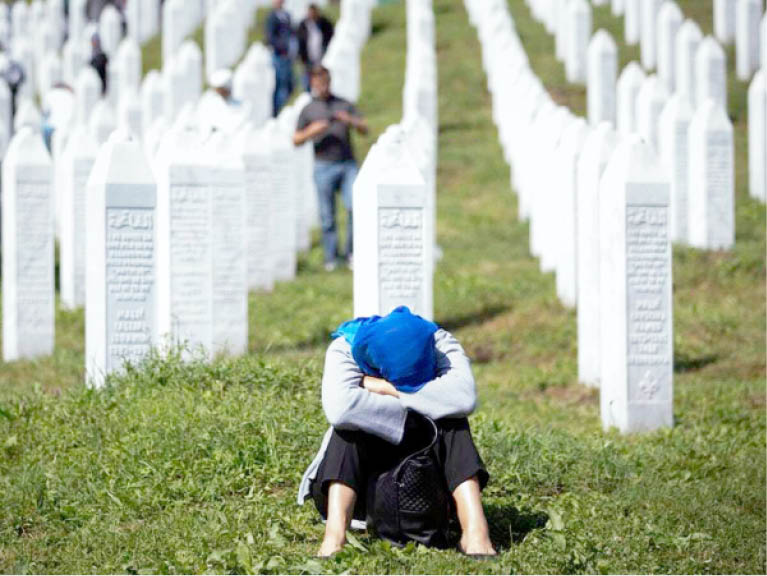Srebrenica massacre: Dutch troops ‘10% liable’ for Srebrenica deaths
The Dutch supreme court has upheld a ruling that the Netherlands was partially responsible for 350 deaths in Bosnia’s Srebrenica massacre. The court said the state had 10% liability, as this was the probability that its soldiers could have prevented the killings. Bosnian Serb forces killed a total of 8,000 Muslim men in the town […]

Relatives of victims visit a memorial cemetery in Potocari near Srebrenica PHOTO: Darko Bandic/AP
The Dutch supreme court has upheld a ruling that the Netherlands was partially responsible for 350 deaths in Bosnia’s Srebrenica massacre.
The court said the state had 10% liability, as this was the probability that its soldiers could have prevented the killings.
Bosnian Serb forces killed a total of 8,000 Muslim men in the town of Srebrenica in 1995.
The Dutch had been guarding a UN safe zone when it was overrun.
It is rare for a state to be held liable for failures in UN peacekeeping work.
In 2002, a report into the Netherlands’ role at Srebrenica caused the entire Dutch government to resign.
If Dutch forces had given the men the chance to stay in their compound, there was just a 10% chance they would not have fallen into the hands of the Serbs, and so the Dutch state should be liable for only that proportion of the damages suffered by the bereaved, the court ruled.
The final verdict draws a line under years of legal battles between the Dutch state and the plaintiffs – a group of victims’ relatives known as the Mothers of Srebrenica.
The case was escalated to the highest court because the state wanted to be cleared of responsibility, while the Mothers of Srebrenica wanted it to be held accountable for all 8,000 deaths in the massacre.
An appeals court had previously set the liability at 30%, but the supreme court’s ruling has drastically reduced that figure.
What happened at Srebrenica?
During the Bosnian War (1992-1995), the Serb army was engaged in an ethnic-cleansing operation.
Thousands of Muslims sought safety in Srebrenica, which the UN was protecting with the Dutch forces.
But the lightly armed peacekeepers capitulated during a violent offensive and expelled hundreds of men from the UN base.
What did the court say?
“Dutchbat [the troops] acted unlawfully in the evacuation of 350 men,” the court found, according to Reuters news agency. “They took away the chance of the men to stay out of the hands of the Bosnian Serbs.”
A lower court had previously ruled that the Dutch were liable for the deaths.
In 2017, an appeals court largely upheld the ruling, but reduced the responsibility to 30%.
The Mothers of Srebrenica had also originally sought acknowledgement and compensation from the UN as well, but the organisation was ruled to be immune from prosecution.
Timeline of Srebrenica siege
6-8 July 1995: Bosnian Serb forces start shelling Srebrenica enclave
9 July: Bosnian Serbs step up shelling; thousands of Bosnian Muslim refugees flee to Srebrenica
10 July: Dutch peacekeepers request UN air support after Bosnian Serbs shell Dutch positions. Large crowds of refugees gather around Dutch positions
11 July: More than 20,000 refugees flee to main Dutch base at Potocari. Serbs threaten to kill Dutch hostages and shell refugees after Dutch F-16 fighters bomb Serb positions. Bosnian Serb commander Ratko Mladic enters Srebrenica and delivers ultimatum that Muslims must hand over weapons
12 July: An estimated 23,000 women and children are deported to Muslim territory; men aged 12-77 taken “for interrogation” and held in trucks and warehouses
13 July: First killings of unarmed Muslims take place near village of Kravica. Peacekeepers hand over some 5,000 Muslims sheltering at Dutch base in exchange for the release of 14 Dutch peacekeepers held by Bosnian Serbs
14 July: Reports of massacres start to emerge
Source: bbc.com
